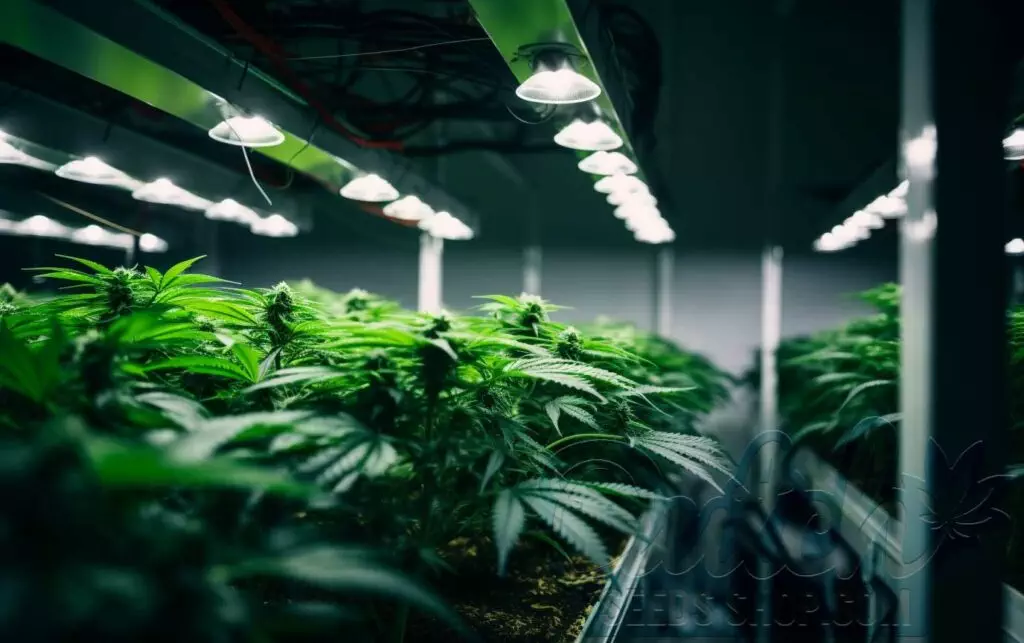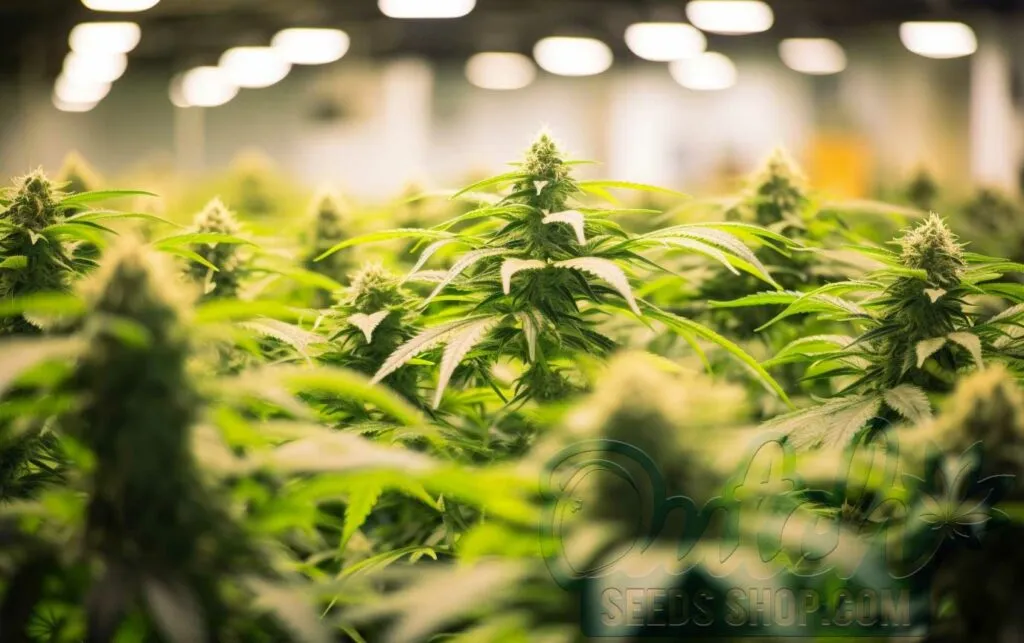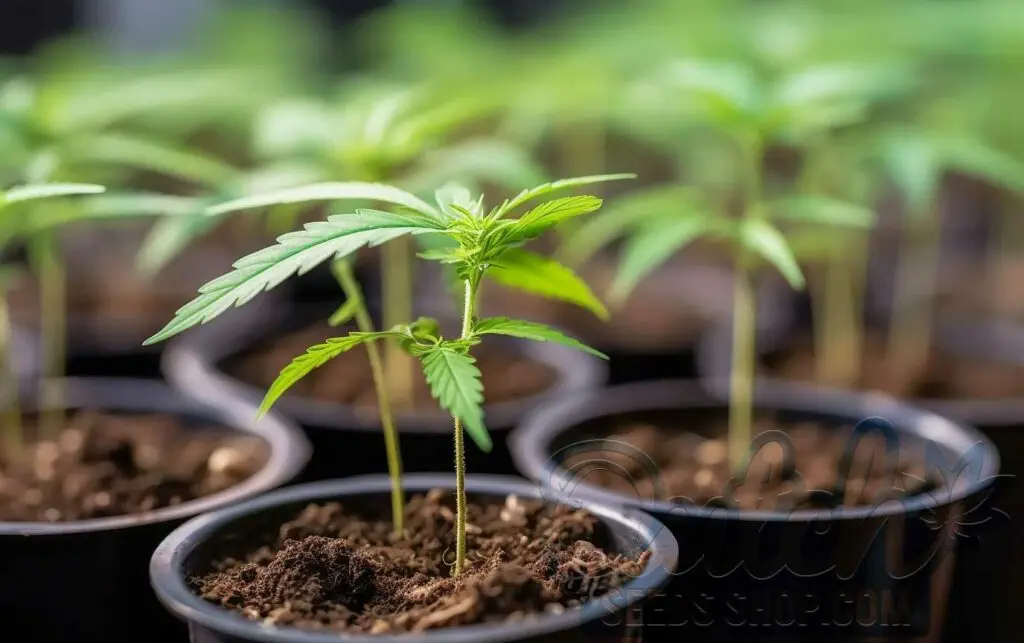How to Grow Goji OG Strain
Tired of average strains that just don’t quite hit the mark? You’re about to discover the magic of Goji OG, a strain as potent as it is flavorful, boasting THC levels from 22% to 26%. With its tropical aroma and cerebral effects, it’s a cannabis connoisseur’s dream.

Get To Know Goji OG Strain
Unlock the treasure that are Goji OG seeds: a Sativa-dominant marvel with its lineage tracing back to Nepali OG and Snow Lotus.
This strain tantalizes the senses with flavors of berry, cherry, and tropical goodness.
With a THC content that ranges between a whopping 22% to 26% and CBD levels below 0.
6%, it’s no slouch in the potency department.
On the awards circuit? Well, let’s just say it’s got more accolades than you can shake a bud at.
Its cerebral and mood-boosting effects have sealed its reputation as a top-tier strain, with countless positive reviews, captivating pictures, and videos showcasing its unique features.
Tips and Tricks for Growing Goji OG Successfully
Alright, growers, get your notepads out!
Growing Goji OG isn’t just about throwing seeds into the soil and hoping for the best.
First off, know that this strain leans 80% Sativa, with an easy growing difficulty – perfect for newbies.
With a flowering time of 60 to 65 days, you won’t have to wait forever to reap the fruits of your labor.
🌱 Quick Tips:
- Select Quality Seeds or Clones: Make sure your starting materials are top-notch.
- Assess Growing Difficulty: Ideal for beginners but offers something for experts too.
- Flowering Time: Mark your calendars for 60 to 65 days.
- Accessories: Invest in quality cultivation accessories like nutrient-rich soil and full-spectrum grow lights.
Goji OG Indoor Growing

Alright, let’s dive into the nitty-gritty of indoor cultivation.
Indoor growing can be a cultivator’s paradise, letting you control virtually every aspect of the plant’s life.
With Goji OG, it means maximizing that beautiful THC content and keeping those aromatic terpenes well-preserved.
Here’s how to make the most of your indoor Goji OG grow operation.
Benefits of Indoor Growing
Indoor cultivation provides an oasis of environmental stability, something that a Sativa-dominant strain like Goji OG will appreciate.
You control every droplet of water, each photon of light, and every nutrient that goes into making this strain the superstar it’s known to be.
With full control over the climate and light cycles, you can maximize yields and optimize potency.
Plus, the absence of pests and diseases that naturally come with outdoor growing can improve both quality and quantity.
Indoor growing is particularly beneficial if you’re targeting specific terpene profiles, as the controlled environment helps preserve the delicate oils that give Goji OG its fruity aroma.
| Aspect | Indoor Advantage |
| Light Control | Customize the light cycle for maximum yield |
| Climate Management | Full control over temperature and humidity |
| Pest Control | Easier to manage in a controlled environment |
| Multiple Harvests | Grow year-round for multiple yields |
Setting Up Your Indoor Grow Space
Your grow space is the canvas upon which you’ll paint your green masterpiece.
The more thought you put into the setup, the better your Goji OG plants will perform.
First, determine how much space you need.
With Goji OG’s Sativa tendencies, anticipate taller plants that need more vertical room.
Allocate space for accessories like fans, filters, and lights.
Ventilation is key; stagnant air is a breeding ground for mold and other undesirables.
Choose your grow medium and containers based on how much you want to micro-manage your plants.
Some prefer hydroponic systems for their control and efficiency, while others stick with soil for its forgiving nature.
- Ventilation: Oscillating fans and carbon filters.
- Lighting: Position lights based on grow stage.
- Space: Enough room for the height and bushiness of Goji OG.
- Temperature & Humidity: Environmental control systems.
Climate Control
Indoor cultivation allows you to control the minutiae of the growing environment, which is crucial for the growth of Goji OG.
The plant’s Sativa-dominant nature requires a tropical, humid climate, especially during the vegetative stage.
As you transition to the flowering stage, gradually reduce the humidity to prevent mold and bacterial growth.
Opt for an automated environmental controller to monitor temperature and humidity levels.
Your grow lights will produce heat, so remember to adjust temperature settings accordingly.
Cooling systems may be necessary to mitigate heat from powerful lamps.
Also, remember to maintain a consistent air exchange to prevent CO2 depletion.
For Goji OG, maintaining temperature between 68–77°F and humidity level around 40–50% during flowering is crucial.
A failure in climate control can lead to a myriad of problems, from poor bud development to heightened vulnerability to diseases.
Types of Lights
Light is like the sun in your indoor grow universe, and choosing the right type can make or break your harvest.

High-Intensity Discharge (HID) lights are an old favorite, delivering strong light but emitting a lot of heat.
LEDs, on the other hand, are more energy-efficient and provide a full spectrum of light, which is especially useful during flowering when Goji OG needs a specific light spectrum to thrive.
Compact Fluorescent Lights (CFL) are great for small spaces but may not offer enough light intensity for full growth cycles.
| Type of Light | Pros | Cons |
| HID | High Light Intensity | High Heat, Energy Intensive |
| LED | Energy Efficient, Full Spectrum | Higher Initial Cost |
| CFL | Good for Small Spaces | Lower Light Intensity |
Growing Mediums and Containers
So you’re committed to growing Goji OG, but have you committed to a growing medium?
The medium you choose will largely depend on how hands-on you want to be.
Soil is an all-time favorite due to its forgiving nature and the rich, robust flavor it imparts to the buds.
Hydroponics, meanwhile, offers increased control over nutrients and faster growth rates, although the learning curve is steeper.
Other popular options include coco coir, which provides a more aerated medium, and aeroponics, a soil-less method where the plant roots are misted with nutrient solution.
As for containers, you’ve got plastic pots, fabric pots, and even air pots to consider.
Plastic pots are cheap but less breathable, whereas fabric pots offer better aeration for the root system, contributing to healthier plants.
Always remember, the container size should be proportional to your plant’s final size to avoid root-bound issues.
Caring for Indoor-Grown Goji OG
Your Goji OG plants are like your green children; they’ll need regular check-ups and feeding.
Watering should be consistent but not excessive, as cannabis plants are highly susceptible to overwatering and root rot.
Nutrients are another balancing act; too little, and your plants starve, but too much, and you risk nutrient burn.
Monitoring pH levels of the water and nutrient solution you use is essential for optimal absorption.
Regularly inspect your plants for signs of nutrient deficiencies, pests, or diseases.
Pruning and training techniques like ScrOG (Screen of Green) or LST (Low-Stress Training) can also be beneficial.
- Watering: Use pH-balanced water and avoid overwatering.
- Nutrients: Use balanced N-P-K nutrients and monitor for deficiencies.
- Monitoring: Keep an eye on pH levels and plant health.
- Training: Utilize methods like ScrOG or LST for maximum yield.
Odor Control
Goji OG is a fragrant lady, but not everyone appreciates her aroma.
With any indoor grow, but especially with strong-smelling strains like Goji OG, controlling odor is a must.
Carbon filters are a grow room essential for keeping those pungent smells at bay.
Installing an exhaust fan paired with a carbon filter can do wonders in trapping strong odors.
Another option is using ozone generators, but these should be used with caution as they can be harmful in high concentrations.
Ona gel, a popular odor neutralizer, can also be used but should be kept away from the grow room to avoid affecting the bud’s natural aroma.
Remember, odor control is not just for your comfort but can be critical for discretion, particularly in regions where cannabis cultivation is not fully legalized or socially accepted.
In essence, the key to effective odor control is a combination of mechanical filters and neutralizing agents.
Goji OG Outdoor Growing

Let’s get down to the green business of growing Goji OG under the great blue sky.
There’s something uniquely rewarding about nurturing this plant in Mother Nature’s own setting.
The combination of natural sunlight, soil, and air does wonders that even the best indoor setup can’t replicate.
Let’s delve into the how-to of outdoor cultivation.
Benefits of Outdoor Growing
With Goji OG, outdoor growing is like giving the plant a passport to its natural habitat.
The sun’s broad spectrum of light promotes healthier growth, and the improved air circulation helps to keep pests and mold at bay.
Plus, you get more room to let those plants stretch, ensuring they grow as bushy or as tall as their genetics allow.
With the soil as your growing medium, you get the benefit of a broad spectrum of natural nutrients.
And let’s not forget the cost; after the initial setup, natural sunlight and rainwater are free, baby!
| Aspect | Outdoor Advantage |
| Sunlight | Full spectrum for healthier growth |
| Space | More room for plants to flourish |
| Cost | Lower long-term costs |
| Natural Nutrients | Rich, complex soil nutrients |
Best Time to Plant Goji OG Outdoors
Timing is crucial; it can make or break your outdoor cultivation game.
For Goji OG, a strain that thrives in a sunny, Mediterranean climate, late spring is ideal.
Planting after the last frost ensures that your plants won’t be killed off by cold temperatures.
Aim for a late September to early October harvest when growing in the Northern Hemisphere.
This timing allows you to take advantage of the warm summer months for the vegetative stage and the mild autumn for flowering.
- Late Spring: Best planting time after last frost.
- Warm Summer: Ideal for vegetative growth.
- Mild Autumn: Perfect for flowering and harvesting.
Setting Up Outdoor Grow Spaces
Your outdoor setup is more than just plopping a seed into the ground; it’s creating a haven where your Goji OG can flourish.
Location is paramount; you need a spot with ample sunlight, well-drained soil, and some form of wind protection.
Consider installing fences or other windbreaks if your location is particularly gusty.
Always test your soil pH and nutrient levels before planting; Goji OG prefers slightly acidic to neutral soil.
Security is another key consideration, especially if you’re growing in a location where cannabis cultivation isn’t broadly accepted or legal.
Opt for discreet spots or use camouflage netting if needed.
- Location: Ample sunlight and well-drained soil.
- Wind Protection: Fences or windbreaks.
- Soil Testing: Check pH and nutrient levels.
- Security: Consider discreet spots or camouflage.
Selecting and Preparing Soil

Your soil is the lifeblood of your Goji OG plants when growing outdoors.
Aim for loamy soil that’s rich in organic matter, well-drained, and slightly acidic to neutral in pH.
Many growers opt for store-bought soil mixes designed for cannabis, but you can also prepare your own by adding compost, worm castings, and other organic matter.
Be sure to test the pH of your soil; Goji OG prefers a range between 6.0 and 7.0.
Soil amendments like lime or sulfur can adjust pH levels.
A week before planting, dig holes or trenches and fill them with your soil mix, then water thoroughly to help the soil settle and to check drainage.
Incorporating a slow-release organic fertilizer at this stage can provide additional nutrients throughout the grow.
Nutrients and Fertilizers
A nutrient-rich soil is your first step, but additional fertilizers can take your Goji OG plants to the next level.
During the vegetative stage, focus on nitrogen-rich fertilizers to encourage leaf and stem growth.
As you transition to the flowering stage, switch to a phosphorus and potassium-heavy blend to promote bud development.
Keep an eye on the nutrient levels to avoid nutrient burn, and always follow the manufacturer’s recommendations.
| Growth Stage | Nutrient Focus | Fertilizer Type |
| Vegetative | Nitrogen | High N Fertilizers |
| Flowering | Phosphorus, Potassium | High P & K Fertilizers |
How to Maximize Goji OG Yield
Maximizing your Goji OG yield isn’t just about plant genetics; it’s about the TLC you offer your green babies.
Regular watering is a must, but so is proper drainage to prevent root rot.
Employ training techniques such as topping, super cropping, or using a trellis to control plant shape and maximize light exposure.
Monitoring for pests and diseases is essential; the use of organic pesticides and regular inspections can save your crop from disaster.
Finally, when it comes to harvest time, the trick is to wait for just the right moment when trichomes are milky white and amber-colored, indicating peak THC levels.
- Watering and Drainage: Consistent but not excessive.
- Training Techniques: Topping, super cropping, trellis.
- Pest and Disease Monitoring: Regular inspections and organic pesticides.
- Harvest Timing: Watch those trichomes for the perfect moment.
Growing Goji OG is like riding a rollercoaster that only goes up; it’s an exhilarating challenge with rewarding payoffs.
This strain offers a unique blend of flavors and effects, making it worth every bead of sweat you pour into its cultivation.
The intricacies of growing this strain, whether outdoors basking in natural sunlight or indoors under controlled environments, give you a canvas to practice and perfect your green thumb.
Mastering Goji OG cultivation allows you to dial in on nuanced flavors and scents, something that only a true connoisseur can appreciate.
Plus, the yield can be pretty darn impressive when you get things just right.
You’re not just growing a plant; you’re crafting an experience.
For those who are willing to dig deep, the benefits are as layered as the strain’s own complex profile.
FAQ
What’s the average flowering time for Goji OG?
Goji OG typically takes about 60 to 65 days to flower when grown indoors. Outdoors, you’re looking at a late September to early October harvest.
How much water do Goji OG plants really need?
While it varies depending on the growing medium and climate, Goji OG plants generally prefer consistent but not excessive watering.
Do Goji OG plants require a lot of nutrients?
Goji OG loves a balanced diet but isn’t particularly nutrient-hungry.
How do you manage pests and diseases for Goji OG plants?
Pest management for Goji OG involves regular inspections and the use of organic pesticides.
How tall does Goji OG grow?
Indoors, Goji OG typically reaches heights of 3-4 feet. Outdoor plants can grow much taller, often exceeding 5 feet, especially when they have ample space to stretch out.
About the Author
Share the Love:
